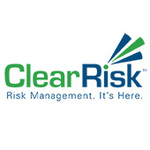Description

Libryo

ClearRisk
Comprehensive Overview: Libryo vs ClearRisk
Libryo Overview
a) Primary Functions and Target Markets
Libryo is a platform focused on helping organizations manage their compliance requirements, specifically in legal and regulatory contexts. It provides users with up-to-date legal regulations applicable to their specific operations, locations, and contexts. The platform organizes these laws into a manageable system that businesses can easily follow.
- Primary Functions:
- Real-time tracking and updates on applicable laws and regulations.
- Customizable to fit the specific needs of different industries and regions.
- Offers contextual law and regulation libraries.
- Target Markets:
- Industries with high regulatory oversight such as environmental, health and safety, finance, and energy.
- Multinational corporations that need to manage compliance across various jurisdictions.
b) Market Share and User Base
Libryo, as a specialized compliance solution, primarily targets niche markets that are heavily regulated. It does not aim for the entire enterprise software market but focuses instead on sectors where compliance is critical. Its user base is relatively smaller compared to broader enterprise software solutions, concentrated in companies that prioritize regulatory compliance as a key aspect of their operations.
c) Key Differentiating Factors
- Legal Expertise and Scope: Offers deep, localized regulatory expertise that many broader compliance platforms lack.
- Customisation and Relevance: Tailors compliance data according to the specific context of the client, increasing relevance and reducing unnecessary noise.
- Real-time Updates: Ensures that users are always informed about changes in regulation as they occur.
ClearRisk Overview
a) Primary Functions and Target Markets
ClearRisk is a web-based risk management platform aimed at simplifying and optimizing the process of risk management across organizations. It helps businesses identify, evaluate, and mitigate risks systematically.
- Primary Functions:
- Risk assessment and register.
- Incident reporting and claims management.
- Analytics and reporting for informed decision making.
- Policy and document management.
- Target Markets:
- Insurance companies, public entities, and medium to large enterprises.
- Any organization looking to strengthen their risk management processes irrespective of industry.
b) Market Share and User Base
ClearRisk has positioned itself well within industries that demand efficient risk management solutions. Its focus on insurance and municipalities provides it a strong niche presence. While not as widely used as some global ERP systems, its reputation in risk management is robust, with a dedicated user base particularly in markets where mitigating risk is a top priority.
c) Key Differentiating Factors
- Focus on Risk Management: Unlike compliance-focused platforms, ClearRisk zeroes in on risk assessment and control, offering tools designed specifically for risk professionals.
- Integration Capabilities: Provides integration with other systems to provide comprehensive risk management solutions.
- User-Friendly Interface: Its emphasis on usability helps organizations deploy risk management solutions with minimal training and onboarding.
Comparative Insights
- Primary Function Difference: While Libryo focuses on legal compliance, ClearRisk specializes in risk management, making them suitable for different business challenges.
- Target Market Focus: Both address heavily regulated sectors but from different problem-solving perspectives – legal compliance versus risk management.
- Market Approach and User Base: Both companies address niche markets; Libryo in regulatory compliance and ClearRisk in risk management, with user bases reflecting their specialized focus.
- Integration and Customization: Both systems offer customization, but while Libryo deals with legal texts, ClearRisk provides tools for risk analysis and incident tracking, each with distinct integration capabilities.
In summary, both Libryo and ClearRisk offer specialized tools capable of significantly enhancing organizational oversight in their respective domains of compliance and risk management. The choice between them would largely depend on whether an organization needs to focus more on complying with legal stipulations or managing potential risks.
Contact Info

Year founded :
Not Available
Not Available
Not Available
Not Available
Not Available

Year founded :
Not Available
Not Available
Not Available
Not Available
Not Available
Feature Similarity Breakdown: Libryo, ClearRisk
Libryo and ClearRisk are both platforms that serve different functions but are utilized for managing specific aspects of compliance and risk. While they operate in related domains, they cater to different needs and industries, which impacts the features they share and how they differ.
a) Core Features in Common
Both Libryo and ClearRisk provide features focused on simplifying complex processes:
-
Compliance Management:
- Both platforms offer tools to manage and track compliance. Libryo focuses on legal compliance, while ClearRisk can be tailored for risk compliance requirements within organizations.
-
Regulatory Updates:
- Libryo provides updates on legal requirements, which may include regulatory aspects depending on the industry. ClearRisk can also integrate regulatory updates where relevant, particularly in sectors heavily influenced by regulation.
-
Reporting and Analytics:
- Both platforms provide analytics and reporting features. This is essential for tracking compliance and risk management, helping organizations stay informed about their current standings and areas that require attention.
-
Document Management:
- Each solution offers ways to manage documents pertinent to compliance or risk assessments, ensuring that important information is easily accessible.
b) User Interface Comparison
While a detailed comparison would require access to both systems simultaneously and possibly some subjective analysis, general differences can often be noticed based on their use cases:
-
Libryo:
- Its user interface is designed to be intuitive for legal compliance users, likely featuring dashboards that provide quick insights into legal landscapes across multiple jurisdictions.
- It emphasizes easy navigation through complex legal information, with search and filter functionalities tailored for compliance professionals.
-
ClearRisk:
- The interface tends to focus on facilitating risk assessments and risk management processes. It likely emphasizes workflow automation and integration with other business systems.
- Its design could be more dashboard-centric for risk monitoring and assessments, tailored for risk managers who need quick access to risk-related data.
c) Unique Features
-
Libryo:
- Distinctly focuses on providing legal compliance across various jurisdictions and industries. It stands out with its ability to track legal requirements on a granular level, offering tailored legal registers specific to an organization's operations and geographic location.
-
ClearRisk:
- Offers comprehensive risk management tools, including risk assessment, claims management, and incident management. These tools are valuable for organizations looking to streamline their risk management practices entirely.
- It often includes features such as risk financing optimization, specifically designed to help organizations manage their risk portfolio more efficiently.
In summary, while both Libryo and ClearRisk offer compliance-related functionalities, they serve different primary purposes: Libryo focuses on legal compliance across jurisdictions, and ClearRisk emphasizes risk management and insurance. Their UIs are tailored to their unique functions, with Libryo providing legal-heavy navigation and ClearRisk focusing on risk assessment tasks. Unique features reflect their core specializations, with Libryo excelling in legal register management and ClearRisk in comprehensive risk workflows.
Features

User-Friendly Interface
Automated Alerts
Legal Document Management
Compliance Tracking

Analytics and Reporting
Risk Management Dashboard
Incident Reporting
Policy Management
Risk Assessment Tools
Claims Management
Analytics & Reporting
Risk Management
User Management
Support & Integration
Best Fit Use Cases: Libryo, ClearRisk
Libryo and ClearRisk are two distinct platforms that cater to different needs within the realm of business compliance and risk management. Here's an overview of their best fit use cases, industry applications, and suitability for different company sizes:
Libryo
a) Best Fit Use Cases for Libryo
Libryo is a platform designed for compliance management, particularly in the legal and regulatory domain. It is best suited for:
-
Industries with Complex Regulatory Requirements: Businesses operating in industries such as environmental management, health and safety, and labor relations, where regulatory compliance is critical.
-
Global Enterprises: Companies with operations in multiple countries or regions, dealing with a myriad of local laws and regulations. Libryo helps streamline and simplify understanding across different jurisdictions.
-
Large Corporations: Enterprises that need to manage a large volume of regulatory data and require a centralized platform for tracking regulatory changes.
-
Projects with High Compliance Needs: Large-scale infrastructure, energy, or construction projects where legal compliance is vital to operational success.
Libryo is particularly beneficial for organizations that need a comprehensive understanding of their legal obligations and a means to stay updated with regulatory changes across various geographies.
d) Industry Verticals and Company Sizes for Libryo
Libryo is versatile across many industry verticals such as:
-
Environmental Services: Ensuring compliance with environmental regulations and permits.
-
Manufacturing: Managing compliance with health and safety laws across production facilities.
-
Energy and Utilities: Navigating complex regulations related to energy production and distribution.
While Libryo can serve businesses of various sizes, it is best suited for medium to large enterprises where the complexity and scope of compliance require robust solutions.
ClearRisk
b) Preferred Scenarios for ClearRisk
ClearRisk specializes in risk management solutions, making it optimal for:
-
Insurance Companies: Firms looking to streamline and improve their risk management processes to better serve clients.
-
Organizations Focused on Risk Reduction: Companies in industries like finance, real estate, and retail that face significant operational and financial risks.
-
Medium to Large Businesses: Companies that need enhanced capabilities for identifying, assessing, and mitigating risks.
-
Enterprises Seeking Custom Risk Solutions: Businesses that require tailored risk management programs to address specific challenges.
ClearRisk is particularly advantageous for organizations that need to enhance decision-making through an integrated view of their risk landscape, enabling them to prevent losses and improve operational efficiency.
d) Industry Verticals and Company Sizes for ClearRisk
ClearRisk caters to a range of industry verticals, including:
-
Insurance and Finance: Helping manage underwriting risks and claims processing.
-
Hospitality: Mitigating risks associated with guest safety, property damage, and liability.
-
Public Sector: Assisting governmental bodies in managing risks related to public safety and infrastructure.
ClearRisk is suitable for medium to large businesses that require a sophisticated approach to risk management and are looking to consolidate various risk-related processes into a coherent strategy.
In summary, Libryo is ideal for companies prioritizing compliance with complex, global regulatory environments, while ClearRisk is suited for businesses focusing on comprehensive risk management strategies across various verticals. Both platforms cater well to medium and large enterprises, though they address fundamentally different business needs.
Pricing

Pricing Not Available

Pricing Not Available
Metrics History
Metrics History
Comparing undefined across companies
Conclusion & Final Verdict: Libryo vs ClearRisk
To provide a conclusion and final verdict for Libryo and ClearRisk, let's analyze both products based on their features, usability, pricing, and overall value:
a) Best Overall Value:
Libryo:
Libryo is a legal compliance platform that helps organizations manage their regulatory requirements efficiently. It is focused on delivering tailored legal registers and updates for various jurisdictions, which is especially valuable for multinational companies needing to navigate complex legal landscapes.
ClearRisk:
ClearRisk is a risk management software that focuses on streamlining the risk management process across organizations. It offers tools for identifying, assessing, and mitigating risks, and is particularly useful for industries like insurance, manufacturing, and retail where risk management is critical.
Verdict:
The best overall value depends on the specific needs of the organization:
- For legal compliance management, Libryo offers the best value with its comprehensive approach to regulatory updates and compliance.
- For risk management needs, ClearRisk provides greater value with its extensive tools for assessing and managing various risks.
b) Pros and Cons:
Libryo:
-
Pros:
- Customizable legal registers that cater to specific industry requirements.
- Automated updates ensure compliance with changing laws and regulations.
- User-friendly interface with a clear focus on legal compliance.
- Strong support for multinational operations due to jurisdiction-specific insights.
-
Cons:
- May not cover extensive risk management features outside of legal compliance.
- Could be perceived as costly for smaller firms with less complex compliance needs.
ClearRisk:
-
Pros:
- Comprehensive risk management features, from identification to mitigation.
- Built-in analytics and reporting tools allow for effective monitoring.
- Suitable for a wide range of industries with critical risk management needs.
- Offers a collaborative platform for integrating various departments in risk management.
-
Cons:
- May not provide sufficient legal compliance features for organizations focused on regulatory adherence.
- Smaller, non-risk-oriented businesses might find it more than what they need.
c) Specific Recommendations:
-
Assess Your Needs: Determine whether your primary requirement is legal compliance management or risk management. This will guide your initial choice between Libryo and ClearRisk.
-
Consider Industry and Jurisdiction: For multinational companies or heavily regulated industries, Libryo’s focus on compliance across multiple jurisdictions might be more beneficial. For industries heavily dependent on risk management, ClearRisk’s tools may provide better support.
-
Evaluate Integration Capabilities: Look at how each platform integrates with your existing systems to ensure seamless implementation and operation.
-
Budget Considerations: While both platforms offer significant benefits, choose the one that provides the necessary features within your budgetary limits.
-
Trial and Demo Sessions: Take advantage of trial periods or demo sessions offered by both companies to better understand their interfaces and functionalities.
In conclusion, both Libryo and ClearRisk offer substantial tools in their respective fields, but the choice boils down to specific organizational needs regarding compliance and risk management. Carefully evaluate each product's offerings against your strategic priorities to make the most informed decision.
Add to compare
Add similar companies



